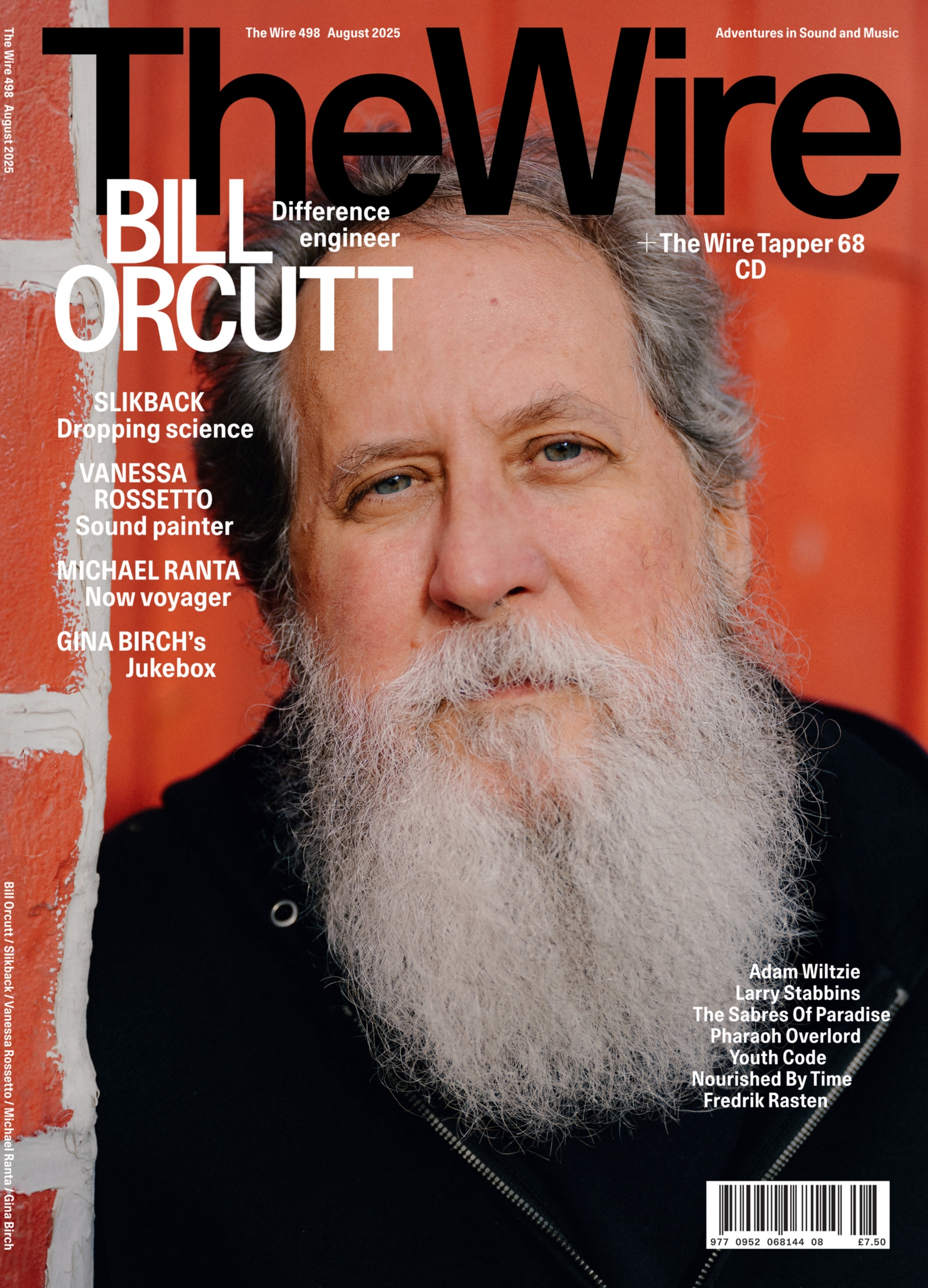
Tomorrow Festival
B10 Live, Shenzhen, China
Though it features just eight performances alongside a lecture and a film screening over three days, the ninth Tomorrow Festival amounts to a journey through multiple worlds, rich in sonic explorations from different lands. The Moscow based trio uSSSy infuse their music with Middle Eastern and Central Asian influences. On guitar and bass respectively, Artem Galkin and Pavel Eremeev engage in an effortless musical conversation over looping patterns, their melodies woven together by drummer Andrei Kim. Straying beyond the 12-tone scale, Galkin’s microtonal guitar adds hypnotic, almost religious depth to their desert noise rock, evoking the Fremen’s sandwalk from Frank Herbert’s sci-fi classic Dune – hesitant yet rhythmically intricate steps designed to avoid deadly sandworms, order and psychedelia intertwined across multiple contexts.
After the dryness of uSSSy’s desert noise, the crowd’s senses are rehydrated by the tropical rainforest sounds of Mathew Ngau Jau and Salomon Gau, members of the Kenyah indigenous community from Sarawak, Malaysia. Barefoot and adorned with hornbill feathers, their music/dance performance on ancient instruments conjures a humid, timeless forest atmosphere. Gau’s slow, graceful dance to Ngau Jau’s plucking of the sape string instrument is like paddling through time, as their chants invoke ancestral spirits.
Back in the urban realm, UK band Petbrick rattle the air with heavy rhythms. Drummer Iggor Cavalera’s relentless pounding is like the perpetual construction noises of the ever growing megapolis that is Shenzhen, while Wayne Adams leans into the chaos like a mad scientist as he manipulates synths and samples filled with screams and shouts. Their Liminal set mirrors their 2022 album title, pushing audiences to ecstatic thresholds where man and machine meld.
In contrast, from the North West China province of Xinjiang, Mamer’s masked duo Ün explore shifting focal points between humans and objects. Switching between the dry, cracked sound of his dombra and bass guitar over Zhang Dong’s experimental percussion – shaman drums, metal chains and an oversized spring – their way of shaping sounds heightens the focus on things rather than people, especially when Dong repeatedly strikes and runs various tools over his giant spring. The Kazakh word ün translates as sound, even as its Mandarin homophone implies silence. Their name aptly reflects complex realities.
On Tomorrow Festival’s last day, Japanese solo musician Junko Ueda’s performance featuring satsuma biwa and Buddhist chants weaves ancient war narratives and spiritual ritual. The opening “Dan-No-Ura” recounts the 1185 battle between Genji and Heike clans, the latter’s desperate resistance poignantly concluding with their child emperor being cast into the sea. The tense “Yoshitsune” and the contemplative “Gion Shoja” follow with a meditation on impermanence, Ueda’s expressive playing and voice conveying both battlefield ferocity and solemn compassion.
This edition’s penultimate highlight presents the public debut of Clandestine Trio, formed by Sun City Girls’ two founding members Alan and Richard Bishop, with drummer Chris Corsano honouring the Girls’ late drummer and lyricist Charles Gocher (1952–2007). Corsano’s rhythmic textures shape expansive improvisational spaces, his occasional solos punctuating the sweet madness and melancholy conjured by Alan’s bass and Richard’s guitar. Certain moments bring to mind Sun City Girls’ final album Funeral Mariachi, with its blend of romantic sweetness and a tribute to the mourning and celebration of life.
The festival’s grand finale is a large scale Tomorrow improvisation unit featuring flautist Lao Dan, whose breathy low tones intertwine with Ueda’s trembling throat singing and fast biwa picking. Corsano and uSSSy drummer Andrei Kim build dense rhythmic layers beneath Richard Bishop’s driven guitar, before Mamer’s sonic walls and uSSSy’s frantic drumming bring the performance to a climax.
In all, a dreamlike and immersive weekend, even if Ueda was the only female musician to participate in this year’s line-up. Greater attention to gender diversity would enrich future editions of the festival.
Anla Li
明天音乐节
深圳B10现场
第九届明天音乐节虽仅在三天内呈现八场演出、一场讲座与一场放映,却如一次跨越多重世界的旅程,展现了来自不同土地的声音探索。
来自莫斯科地下场景的三人组uSSSy,其音乐汲取了中东与中亚等地的养分。Artem Galkin和Pavel Eremeev分别以吉他与贝斯对答如流,在循环乐句中建立起松弛而默契的对话;鼓手Andrei Kim将旋律巧妙编织成整体。Galkin的微分音吉他游离于十二平均律体系之外,为他们的沙漠噪音摇滚注入了催眠般、近乎宗教性的深度。那种律动令人联想到Frank Herbert所著的科幻经典《沙丘》中弗雷曼人的“沙舞”——为躲避致命沙虫而创造的犹疑且节奏错综复杂的步伐,规整与迷幻在多重语境中交织映衬。
干燥过后,观众的感官被来自热带雨林的声音重新濡湿。两位表演者——沙贝琴大师 Mathew Ngau Jau 与音乐家兼舞者 Salomon Gau——均出身于马来西亚砂拉越的原住民族群肯雅族。他们赤足登场,头戴犀鸟羽冠,以古老乐音召唤湿润而永恒的雨林气息。Gau随着Ngau Jau的弹奏缓慢而优雅地起舞,仿佛在时间的河流中划桨前行;吟唱之间,祖灵应声而至。
倏忽之间回到都市丛林,来自英国的Petbrick用重型节奏震颤空气。鼓手Iggor Cavalera的持续猛击,如同深圳这座不断扩张的超级都市里永不停歇的施工噪音般恒定,而Wayne Adams则如疯狂科学家般埋首于混乱之中,操控着合成器与采样,声响中充斥着尖叫与咆哮。他们的演出名称“临界状态”与2022年的专辑同名,将观众推向狂喜的临界,人与机器在此交融。
相比之下,来自新疆的二人组Ün在人与物之间,探索着焦点的转移。马木尔的冬不拉与贝斯交替发出干燥龟裂的声音,而张东的声音实验则周旋于萨满鼓、金属链条和巨型弹簧之间。他们的声音构造方式将注意力从人转向物,在张东反复敲击、使用各种工具摩擦这根弹簧时尤为明显。Ün 在哈萨克语中意为“声音”,却与汉字“喑”(缄默)同音。这一名字恰如其分地映射出复杂的现实。
最后一日,日本音乐家上田纯子以萨摩琵琶与声明唱诵,交织出一幅波澜壮阔的战争史诗与精神仪式的图景。开篇曲《壇之浦》讲述1185年源氏与平家的决战,后者的顽强抵抗以幼帝沉海的悲壮场景告终。随后,《义经》中散落高昂紧凑的琴音,《祗园精舍》则唱出“诸行无常”的真理。上田闭目抚琴,手持扇形拨子拨弄琴弦。音色时而干脆震慑,时而迅速扫弦,再现战场之激烈;又以短促的寥寥弦音填充空隙。演绎幼帝投海时,她的声音转为低沉嘹亮,带有不容置疑的悲悯与距离。悠悠喉音富有余韵,为终战的冤魂送行。
大即兴前的压轴演出,是Clandestine三重奏的首次公开亮相。乐队由Sun City Girls两位创始成员Alan Bishop和Richard Bishop携鼓手Chris Corsano组成,以此致敬已故鼓手兼词作者Charles Gocher(1952-2007)。Corsano巧妙地以鼓点构筑广袤的即兴空间,韵律与张力并存。Alan的贝斯与Richard的吉他包裹着甜蜜的疯癫与忧伤,Corsano偶有的独奏为此写下个人注脚。某些瞬间令人想起Sun City Girls的最后一张专辑《Funeral Mariachi》,既浪漫又甜美,也是对生命的悼念与庆祝。
随后,音乐节迎来了真正的告别——大即兴。管乐演奏家老丹以气息充沛的低音缓缓吹奏,与上田震颤的喉音与疾速的琵琶拨弦相互呼应。Corsano与uSSSy鼓手Andrei Kim随后在Richard Bishop的吉他下构建起密实的节奏层次,马木尔的音墙与uSSSy激烈的击鼓,为整场演出画下开放式结尾。
总体而言,这一届明天音乐节如梦似幻,令人沉浸。然而,上田纯子是阵容中唯一的女性音乐人。若未来能更加注重性别多样性,音乐节的面貌将更加丰富。
Anla Li
August 2025
First published on The Wire. Copyright © The Wire magazine.
